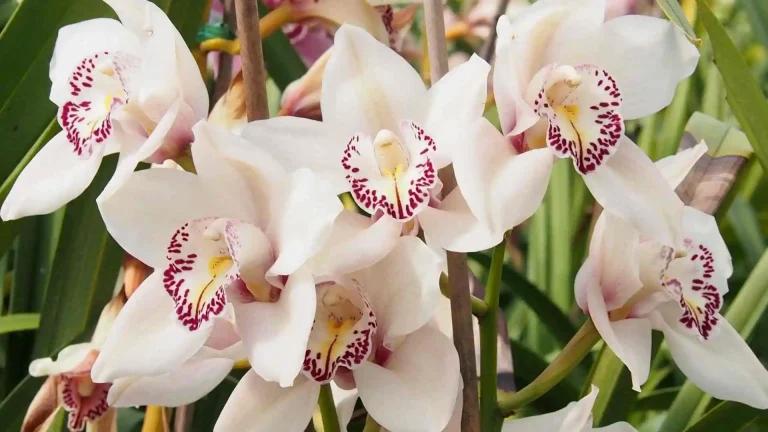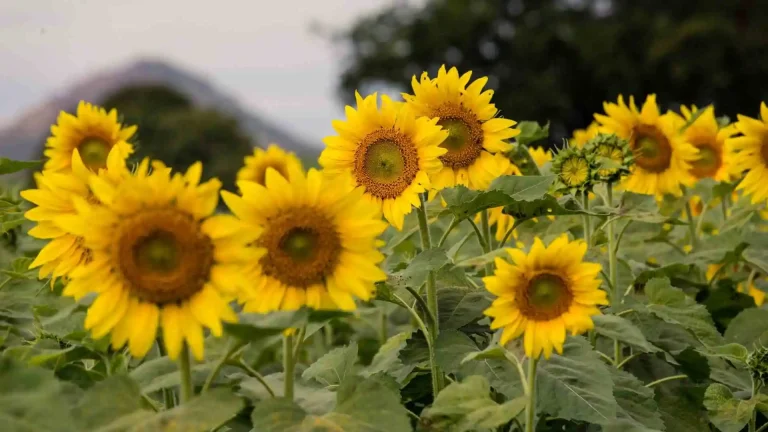Essential Tips for Successful Rose Gardening – From Planting to Care
Roses are one of the most popular flowers in gardens around the world. However, growing them can be tricky for beginners. Many people face problems with pests, diseases, and not knowing the best care practices during rose gardening. According to recent data, over 25% of new gardeners struggle with maintaining healthy roses.

The good news is that rose care is simple once you know the basics. Choose the right rose for your climate. Water it properly and trim it on time. With these steps, your roses will thrive. This guide offers easy tips to help you grow beautiful roses, no matter your experience.
If you’re interested in learning about benefits in home gardening, please visit Home Gardening Benefits.
Why Choose Roses for Your Garden?
Roses are a classic choice for any garden. Their colors and fragrance make them stand out. In 2025, roses are still popular among gardeners for their beauty and versatility.
Not only do roses enhance your garden’s look, but they also attract pollinators. Roses are easy to care for and suit both beginners and experienced gardeners. They add lasting value to your outdoor space.
Discover the Beauty and Benefits of Roses
Roses are known for their stunning beauty and pleasant fragrance. They come in various colors, shapes, and sizes, making them perfect for any garden style. Growing roses can bring both visual appeal and a wonderful scent to your space.
Roses are also known for their ability to improve garden health. They attract bees and butterflies, which are beneficial for pollination. Additionally, many rose varieties are disease-resistant, making them easier to grow and maintain.
How Roses Enhance Your Garden’s Aesthetic and Value
Roses can completely transform your garden’s look. Their vibrant colors and elegant petals add a touch of sophistication. Whether planted in borders or as a focal point, roses never fail to impress.
Not only do roses improve your garden’s aesthetic, but they also increase its value. A well-maintained rose garden can make your home more attractive to potential buyers. Their beauty and charm create a welcoming and elegant atmosphere.
Types of Roses to Grow in Your Garden
Roses come in different types, each with unique features. Some are perfect for small spaces, while others grow tall and wide. In 2025, there are even more varieties to choose from, making it easier to find the right fit for your garden.
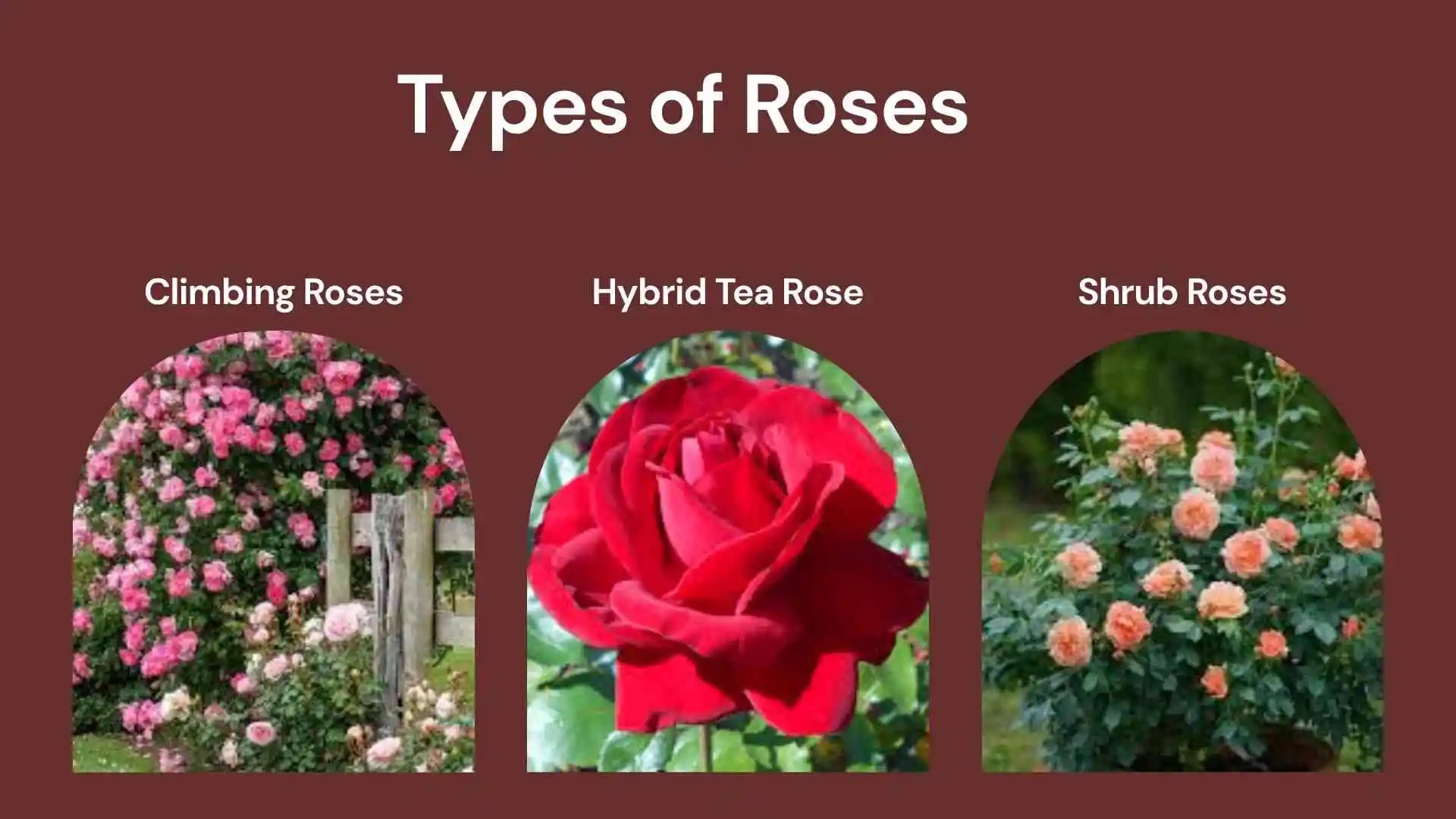
Selecting the right type of rose is important for successful growth. Some varieties do better in hot climates, while others prefer cooler areas. Knowing which rose works best for your environment will help it thrive.
Exploring the Best Rose Varieties for Different Climates
Choosing the best rose for your climate helps ensure healthy growth. Some roses love the heat, while others do well in cooler weather. In 2025, hybrid roses are designed to grow in various conditions.
If you live in a warm area, consider planting Hybrid Tea or Floribunda roses. For cooler regions, Rugosa roses are a better choice because they resist cold better. Each variety can bring beauty to your garden with the right care.
Popular Rose Types – Climbing, Hybrid, and Shrub Roses
Roses come in many types, with climbing, hybrid, and shrub varieties being the most popular. Climbing roses are perfect for trellises and fences, creating stunning vertical displays. Hybrid roses offer large, colorful blooms and are perfect for flower beds.
Shrub roses are versatile and easy to care for. They grow in bush-like shapes and are great for borders or as standalone plants. Each type of rose brings something unique to your garden, depending on your space and needs.
Step by Step Guide to Rose Planting
Planting roses is easy if you follow the right steps. First, choose a spot that gets plenty of sunlight, as roses need around six hours of sun each day. Make sure the soil is well-drained and fertile for the best growth.
Next, dig a hole that’s deep enough to fit the roots comfortably. Gently place the rose in the hole, cover it with soil, and water it well. This simple process helps your rose plant settle in and begin growing strong.
How to Choose the Perfect Location for Your Roses
Choosing the right location is key to healthy rose growth. Roses thrive in sunny spots, so pick an area with at least six hours of direct sunlight each day. A sunny location helps the roses grow strong and produce beautiful blooms.
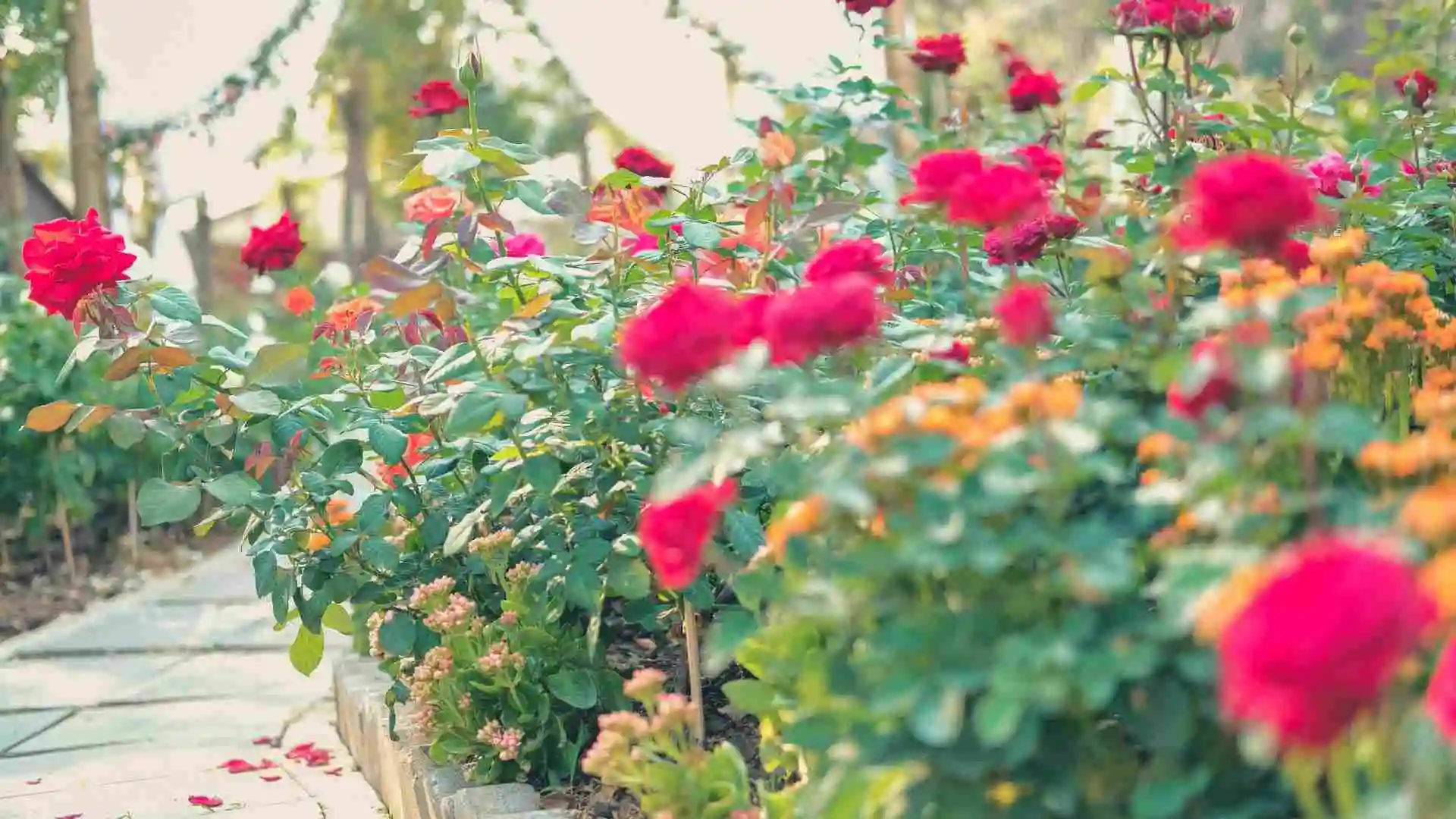
Make sure the site has well-drained soil. If the soil holds water, roses may develop root rot. By selecting the right location, you give your roses the best chance to flourish.
The Best Soil and Fertilizer for Roses
Roses need nutrient-rich soil to grow healthy and strong. The soil should be well-draining to prevent water from pooling around the roots. A slightly acidic soil pH of 6 to 6.5 is ideal for roses.
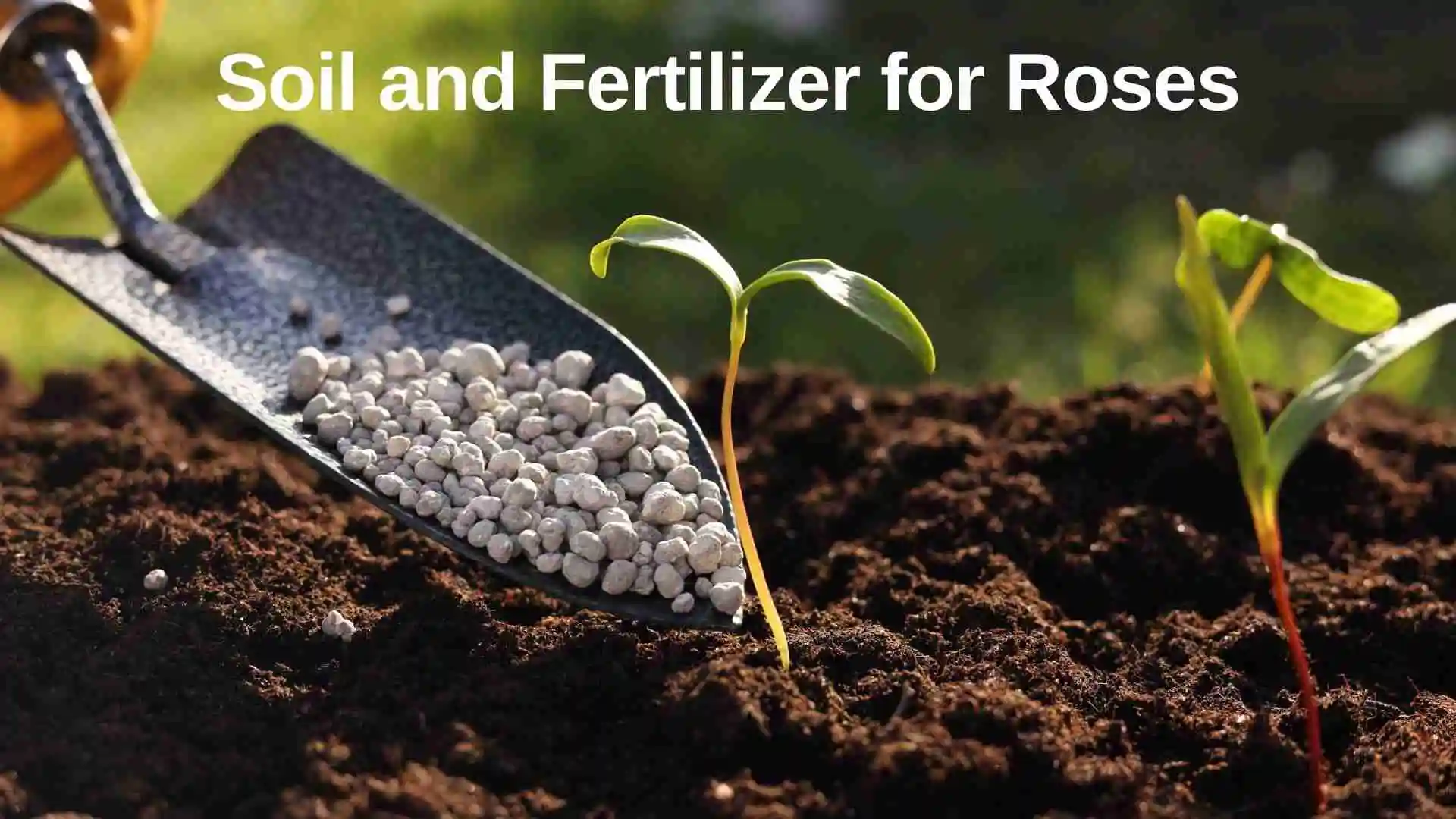
Fertilizing roses helps them bloom better and grow faster. Use a balanced fertilizer that’s high in potassium, phosphorus, and nitrogen. Apply fertilizer during the growing season to keep your roses vibrant and healthy. Below are some fertilizers suggested for different soil types.
| Soil Type | Best Fertilizer | Why This Works |
|---|---|---|
| Loamy Soil | Balanced NPK fertilizer | Loamy soil holds moisture and nutrients well. NPK fertilizer helps promote strong growth. |
| Clay Soil | Organic compost and slow-release fertilizer | Improves drainage and nutrient availability. |
| Sandy Soil | High-phosphorus fertilizer | Provides essential nutrients for healthy root development. |
Preparing Your Garden Bed for Rose Planting
Preparing the garden bed is an important step in planting roses. Start by clearing the area of weeds and debris to give your roses plenty of space to grow. Loosen the soil to a depth of about 12 inches to encourage root development.
You can improve the soil by adding compost or organic matter. This will enrich the soil and help retain moisture. Once the bed is ready, you can plant your roses and start their journey to healthy growth.
Caring for Roses – Essential Tips for Healthy Growth
To help your roses grow strong, water them properly. Roses need deep watering at the base, but don’t overdo it. Be sure not to get the leaves wet to avoid diseases.
Fertilizing roses during the growing season helps them stay healthy. Give them enough sunlight each day, and protect them from harsh winds. Regular care will keep your roses blooming beautifully.
How to Water Roses Effectively
Watering roses the right way is crucial for healthy growth. Roses need deep watering to reach their roots, but they don’t like sitting in water. Water them in the early morning to allow the soil to dry before night.

It’s best to water at the base of the plant, not from above. This helps prevent mold and diseases. Be sure to adjust the watering based on weather conditions, giving them more water during hot spells.
| Watering Time | Best Practice |
|---|---|
| Morning | Water at the base of the plant. |
| Evening | Avoid watering in the evening. |
| During Dry Spells | Water deeply, 2-3 times a week. |
Protecting Roses from Pests and Diseases
Rose gardening often faces challenges from pests and diseases. Regularly check your roses for signs of aphids or common diseases like black spot. Early detection is key to keeping your roses healthy.
To protect your roses, use organic methods like neem oil or safe pesticides. Also, remove any fallen leaves to avoid pests from spreading. With proper care, rose gardening can be a rewarding experience.
| Pest/Disease | Signs to Look For | How to Control |
|---|---|---|
| Aphids | Small, green insects on leaves. | Use neem oil or insecticidal soap. |
| Black Spot | Yellowing leaves with black spots. | Remove infected leaves and apply fungicide. |
| Powdery Mildew | White, powdery coating on leaves. | Use fungicides and improve air circulation |
Pruning Roses – When, Why, and How to Do It Right
Pruning is an important part of rose gardening. It helps your roses grow stronger and bloom more. You should prune your roses in early spring, just before new growth begins.
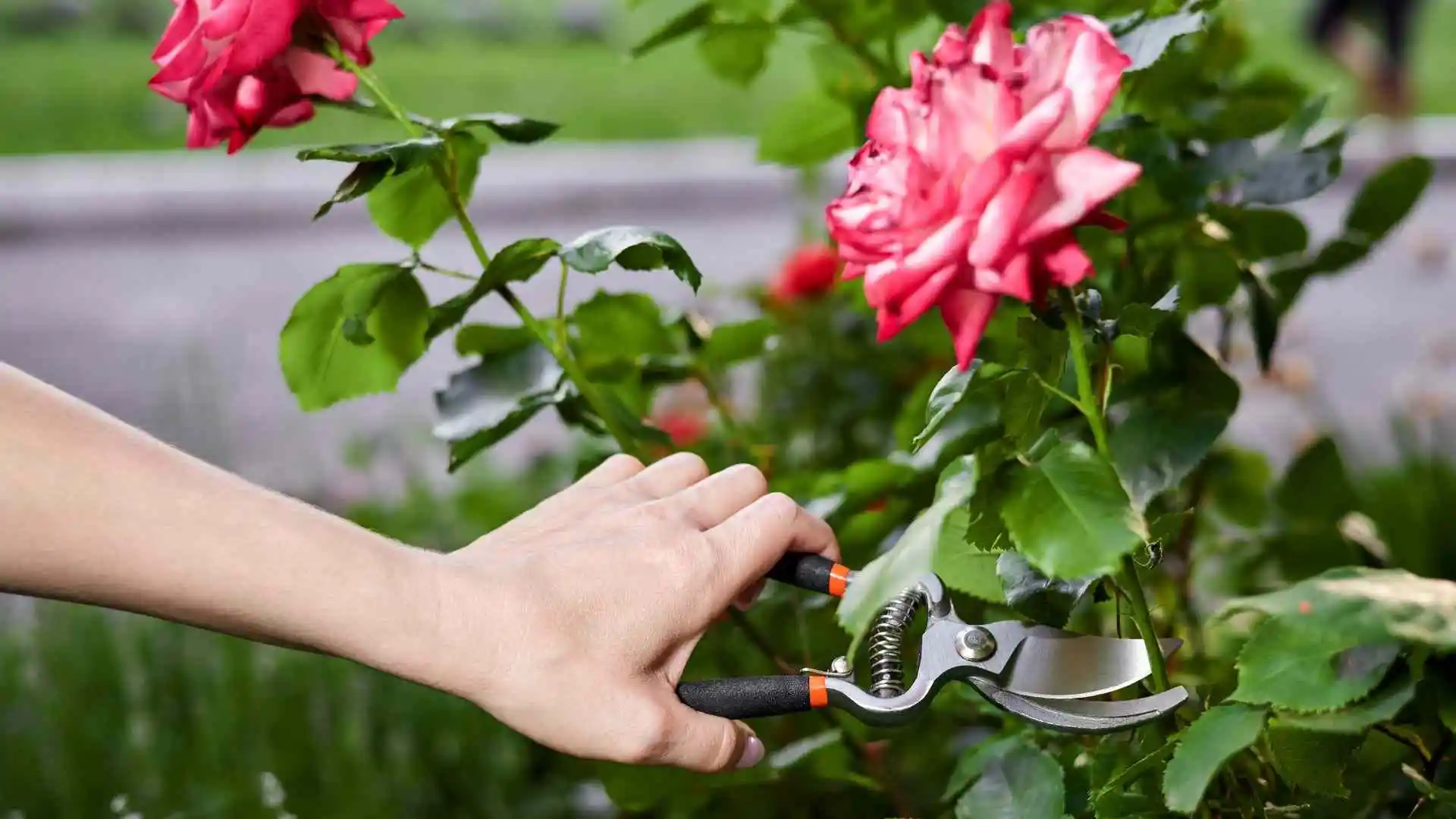
Cut away dead or damaged branches to encourage healthy growth. Always use sharp, clean tools to avoid spreading diseases. Proper pruning will ensure your roses remain healthy and look beautiful.
| When to Prune | Why Prune | How to Prune |
|---|---|---|
| Early Spring | To remove dead or damaged wood. | Use clean, sharp pruning shears to cut back weak stems. |
| After Blooming | To encourage new blooms. | Cut off spent flowers and trim leggy growth. |
| Late Winter | To shape the bush and remove old growth. | Prune the longest stems back to the base of the plant. |
Troubleshooting Common Rose Problems
Rose gardening can sometimes come with challenges, such as yellowing leaves or stunted growth. If you notice yellow leaves, it could be a sign of overwatering or a nutrient deficiency. Adjust your watering and consider adding fertilizer to fix the issue.
Stunted growth may result from poor soil or lack of sunlight. Make sure your roses have enough sun and the right soil conditions. Addressing these issues early on will help your roses thrive in your garden.
Dealing with Yellowing Leaves and Stunted Growth
In rose gardening, yellowing leaves can indicate a few problems. Overwatering or poor soil drainage often causes this issue. To fix it, adjust watering habits and ensure the soil is well-drained.
Stunted growth can happen if roses don’t get enough sunlight or nutrients. Make sure your roses receive at least six hours of sunlight each day. Fertilizing your plants with the right nutrients will help them grow strong and healthy.
How to Prevent Rose Diseases and Fungal Infections
In rose gardening, fungal infections like powdery mildew can be a problem. To prevent these, water your roses at the base and avoid getting the leaves wet. This will help reduce the risk of diseases.
If you notice any infected leaves or stems, remove them quickly. Using organic fungicides can also protect your roses from common infections. With proper care, your roses will stay healthy and vibrant.
Handling Overwintering Roses in Cold Climates
Protecting your roses during winter is important in cold climates. Before the frost arrives, prune your roses and cover the base with mulch. This helps protect the roots from freezing.
You can also wrap the bushes with burlap to protect them from the cold wind. With these simple steps, your roses will stay safe and be ready to grow strong when spring comes.
The Best Fast Growing and Climbing Roses for 2025
In 2025, fast-growing and climbing roses are still top choices for rose gardening. They bloom quickly and are easy to care for. Varieties like “Knockout” and “Drift” are known for their vibrant colors and quick growth.
Climbing roses, such as “Don Juan” and “New Dawn,” are perfect for decorating fences and trellises. These roses grow tall and add beauty to any garden. Whether you have small space or need a vertical garden, these roses are a great option.
Discover Fast Growing Rose Varieties for Instant Garden Appeal
Fast-growing roses are perfect for quick results in rose gardening. Varieties like “Knockout” and “Drift” bloom quickly and are easy to care for. These roses add color to your garden fast.
These roses are also hardy and resistant to diseases. They’re a great option for gardeners who want beauty without long wait times.
Climbing Roses – Perfect for Arbors, Trellises, and Fences
Climbing roses are ideal for adding beauty to arbors, trellises, and fences. They grow upward, creating stunning vertical displays. These roses are perfect for gardeners with limited space or those who want to decorate walls and structures.
Climbing roses like “Don Juan” or “New Dawn” are popular for their strong growth and beautiful blooms. They require support, so be sure to provide a trellis or fence to help them grow tall and strong.
Seasonal Rose Care – Tips for Each Time of the Year
Caring for roses changes with the seasons. In spring, focus on pruning and fertilizing to prepare your roses for new growth. During the summer, ensure your roses get enough water and watch for pests.
In fall, reduce watering and prepare your roses for the winter. Mulching around the base helps protect the roots from cold weather. Each season brings its own care needs to keep your roses healthy year-round.
Winterizing Your Roses for the Cold Months
Protecting your roses during winter is important. Before the frost, prune your roses and add mulch around the roots. This helps keep them safe from the cold.
You can also wrap your roses with burlap to protect them from freezing winds. These simple steps ensure that your roses stay healthy through the winter. They will bloom well when spring arrives.
Spring Care – Getting Your Roses Ready for the Bloom Season
Spring care is important for your roses. First, remove any winter coverings and check for damage. Prune any dead or weak branches to help new growth.
Fertilize your roses to give them the nutrients they need. Water them regularly and ensure they get enough sunlight.
Summer Rose Care – Keeping Your Plants Thriving
In summer, roses need regular care to stay healthy. Water them deeply at the base to avoid dry soil. Be sure to check for pests and remove them quickly.
Mulching around your roses helps retain moisture and keeps the roots cool. Continue to prune dead flowers to encourage more blooms throughout the summer.
Fall Rose Care – Preparing for the Off Season
In rose gardening, fall care is important to prepare your roses for winter. Cut back any dead or diseased branches and clean up fallen leaves. This helps prevent pests and diseases from spreading.
Reduce watering as the weather cools down. Mulch around the base to protect the roots from freezing. Proper fall care ensures your roses stay healthy through the off-season and bloom beautifully in the spring.
Rose Gardening Tools You Need
In rose gardening, having the right tools is key. Pruning shears are essential for cutting back dead branches and shaping your roses. A good pair of gloves will protect your hands from thorns while handling the plants.
Other tools like a hoe for weeding and a watering can for deep watering are also important. Having the right tools makes maintaining your roses easier and more enjoyable.
Must Have Tools for Pruning and Maintenance
For successful rose gardening, a sharp pair of pruning shears is a must. These will help you trim dead or damaged stems without harming the plant. A pruning saw can be helpful for thicker branches that need cutting.
A garden rake and spade are also useful for cleaning the rose bed. These tools make it easier to maintain healthy roses.
How to Choose the Right Fertilizers and Pesticides for Roses
Choosing the right fertilizer is key in rose gardening. Use a balanced fertilizer that contains nitrogen, phosphorus, and potassium. This helps roses grow strong and produce beautiful blooms.
For pesticides, choose organic options to avoid harmful chemicals. Apply them as needed, and always follow the instructions carefully to protect both your roses and beneficial insects.
Expert Tips for Growing Award Winning Roses
For successful rose gardening, focus on proper soil, sunlight, and watering. Roses need well-drained soil and at least six hours of sunlight a day. This will help them grow strong and produce beautiful flowers.
Pruning your roses regularly also encourages healthy growth. Removing dead or weak branches will allow the plant to thrive. By following these expert tips, you can grow award-winning roses in your garden.
Proven Methods for Achieving Perfect Rose Blooms
In rose gardening, achieving perfect blooms requires patience and care. Regular pruning helps remove dead flowers and encourages new growth. Also, make sure your roses receive plenty of sunlight and water deeply.
Using a good fertilizer will provide the nutrients needed for strong blooms. With proper care, you’ll see healthy, vibrant roses bloom season after season.
Advanced Techniques for Rose Garden Design
For better rose gardening, try planting roses in groups to create a beautiful display. Mixing different varieties can add more color and texture to your garden. This design method makes your rose garden more attractive.
You can also layer roses with other plants for added depth. This makes the roses stand out even more. These simple design tips will make your garden look stunning.
Common Rose Gardening Mistakes to Avoid
Overwatering and underwatering are common mistakes. Too much water can rot the roots, while too little can dry the plant out. Finding the right balance is key.
Choosing the wrong rose variety for your climate is another mistake. Pick roses suited for your local weather. This will help your roses thrive.
Overwatering and Underwatering – Finding the Right Balance
In rose gardening, finding the right balance between watering is important. Too much water can cause root rot, while too little will dry out the plant. Water deeply but not too often to keep your roses healthy.
Check the soil regularly to see if it’s dry or wet. Adjust your watering schedule based on the weather and the needs of your roses. Proper watering ensures strong and thriving roses.
Here’s some signs and solutions of overwatering and underwatering.
| Condition | Signs | Solution |
|---|---|---|
| Overwatering | Yellowing leaves, soggy soil | Water less frequently, improve drainage |
| Underwatering | Wilted leaves, dry soil | Increase watering, ensure deep watering |
Choosing the Wrong Rose Variety for Your Climate
Selecting the right variety for your climate is crucial. Some roses do better in warm climates, while others thrive in cooler areas. Choosing the wrong variety can lead to poor growth.
Make sure to research which roses are best suited for your region. This helps ensure your roses grow strong and bloom beautifully. Always consider the local weather before planting. Below are some suggestions.
| Climate Type | Best Rose Varieties | Why These Roses Work Well |
|---|---|---|
| Warm Climates | Hybrid Tea Roses, Floribunda Roses | These varieties thrive in hot temperatures and need plenty of sun. |
| Cool Climates | Rugosa Roses, Shrub Roses | These varieties are cold-hardy and can handle lower temperatures. |
| Moderate Climates | Climbing Roses, Knock Out Roses | These roses adapt well to a range of weather conditions, thriving in mild climates. |
Resources and Tools for Rose Gardeners
For rose gardening, books and websites are great resources. Look for gardening books that focus on roses. Websites and online forums can also offer helpful tips and advice.
When it comes to tools, invest in good quality gardening gloves, pruning shears, and a watering can. These tools make caring for your roses easier and more enjoyable.
Best Rose Gardening Books and Websites to Follow
If you’re new to rose gardening, there are many great books to help you. “The Rose Bible” is a good option for learning how to grow and care for roses. It offers simple advice on planting, pruning, and more.
Websites and online forums are also helpful. Many gardening sites provide tips, guides, and community support. These resources are perfect for anyone looking to improve their rose gardening skills.
Conclusion
Rose gardening can be easy and fun if you know the basics. By choosing the right variety and giving proper care, your roses will thrive. Make sure they get enough sunlight, water, and attention.
The right soil and fertilizer will help your roses bloom. Regular pruning will keep them strong. Protect your roses from pests to ensure healthy growth. In 2025, rose gardening is easier than ever, and with patience, you’ll enjoy beautiful blooms year after year.

